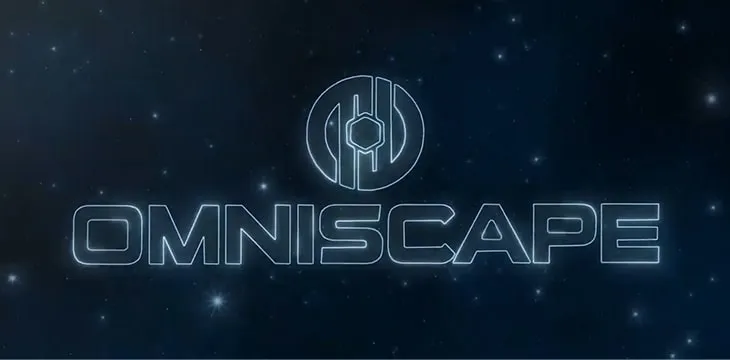|
Getting your Trinity Audio player ready...
|
What do the names “Metaverse”, “OASIS” and “Matrix” have in common? They’re famous examples of virtual reality from science fiction—technologically advanced digital worlds where the VR experience is fully immersive and in most cases, indistinguishable from physical reality. The number of minds and companies working to build such an environment is so large that its emergence is perhaps inevitable. Adding a scalable blockchain like Bitcoin BSV to mix can solve real problems in the present day, and that’s what Omniscape is doing with its more marketing-focused VR and AR blend, called XR Metaverse.
AR and VR, different and yet the same
To those unfamiliar with the terms, “VR” is virtual reality (as fully-immersive as possible) whereas “AR” is augmented reality, which takes the physical world and adds extra viewable/interactive elements to it. Most VR activity has been in the gaming space. AR has seen more applications in business and training (think Google Glass or Microsoft HoloLens) but also for casual mobile gaming (“Pokemon Go” is probably the best-known example of AR).
AR and VR are not mutually exclusive. Omniscape wants XR Metaverse to combine them by using real-world elements like physical location, identity, commercial transactions and authentication with digital virtual environments. For example, the platform can “geolocate branded AR content and virtual goods that can be collected and redeemed for real-world products and special offers.” With VR hardware like headsets, or even a regular screen if you don’t have VR gear, it can also be used to create realistic 3D spaces.
Omniscape was created by Transmira, Inc. of North Carolina. CoinGeek spoke to Transmira CEO Robert Rice about what the company is creating, and how it’s more about commercial realities than science fiction hype.
It’s thinking about these use cases that Omniscape used as a starting point. Some of them are more commercially-oriented applications for VR and AR like marketing, even PR. “Omniscape is ideal for “multiplying brand awareness and engagement, and then turning that into transactions,” Rice said.
He noted that his ultimate inspiration and ambition remains the full-immersive experience, saying he’s building something “more like Ready Player One’s OASIS, but for the real world.” He began his career at the first US-based VR arcade game company in the 1990s, giving him the opportunity to see the possibilities. He then turned to the AR side of things in 2007, working with ARToolkit and PTAM. Those science fiction movies and novels remain a key influence, though.
“First and foremost, we treat AR and VR as two sides of the same coin, instead of two separate and distinct entities. When you add location for context and relevance, and connect other technologies like AI, IoT, Blockchain, 5G, edge-computing, and so forth, you end up with something interesting and powerful that suddenly makes a lot of experiences and interactions viable. It sounds like a salad of buzzwords and acronyms, sure, but they are all necessary puzzle pieces, or maybe parts of a watch is a better analogy, where all are fundamental to building the platform we all dream about.”
The method Rice and Omniscape uses is to start with that future vision, then deconstruct it to understand what technologies and approaches are needed for those first steps. That’s why the focus is more on marketing and advertising—the possibilities to monetize products they develop are more immediate and obvious.
Where does Bitcoin come into this?
A blockchain record not only handles transactions, but it also allows companies to better track ROI from individual campaigns and how much they’re spending.
“We believe that Bitcoin SV is a fundamental cornerstone of the tech ecosystem necessary to build the XR Metaverse (the right way),” Rice said.
“Blockchain is critical for things like authenticity, identity, commerce, ownership, and transferability. Understanding who you are, where you are, what is around you, and what you are doing is needed to deliver extraordinary experiences and real value, especially with AR. But the experiences we are talking about aren’t limited to one-off novelty interactions. We are talking about a system or infrastructure that is ubiquitous and persistent. That means no matter where you go, the world around you is responsive and rich with data, content, visualizations, and much more.”
“Your identity needs to follow you, locations need to remember who you are and your activities in the past. You need to be able to discover and collect 3D objects, with the ability to use them in another AR or VR environment or send them to friends. Smart buildings need to automatically respond to you when you arrive, and AI holograms doing customer service should address you by name.”
He added that building an infrastructure consisting of virtual and physical elements requires sophisticated layers of systems. These, by nature, require a blockchain base to make sure everything is secure, valid, tracked and trusted. It might be digital goods or a discount coupon, but all these things need to be unique and non-replicable, and their origins known.
Bitcoin BSV is ‘the only realistic solution here’
So when you eventually do arrive at those science fiction-esque virtual worlds, you’ll need to understand how all those elements work together.
“Solving these issues and other difficult problems related to designing a global-scale AR/VR platform, is only viable with BitcoinSV. It stands far above other options, and is the clear leader from technical, scale, and cost perspectives. As we are developing Omniscape, BSV will be integrated at a deep level in several areas, mostly transparent to the end-user. Using anything else is like trying to put a nail in the wall with a cardboard roll instead of using a hammer. BitcoinSV is the only realistic solution here. It is the hammer. It is powerful, scalable, fast, and affordable.”
To prove its capabilities, Omniscape is building a few applications specifically for the BSV industry. It’s working on systems for things like Hackathon voting and competitions, working with sponsors at events like future CoinGeek conferences to create entertaining experiences for attendees that include trivia questions, location-based giveaways and pickups, and the ability to interact with their existing mobile Bitcoin wallets.
“Even cooler, we can geolocate these objects anywhere in the world for people to find. We have some pretty insane things planned for next year based on this and some other things up our sleeves.”
Rice said Omniscape is also working on projects in esports and professional sports, saying “2021 is going to be a crazy year for us.” Many of the ideas they’re developing for CoinGeek could be applied to any event, and Omniscape is also looking at the wider advertising/marketing industry for branded virtual goods, paid content, and geolocated items.
For better or worse, the 2020 COVID-19 scare has only accelerated desire to move more of our lives into virtual/online spaces. Even if you’re a bit anxious about what would become of the physical world once truly immersive experiences are available (those science fiction examples are full of virtual utopias within physical dystopias) you have to accept, it’s going to happen somehow. It might as well be trustworthy.
Rice foresees the ability to “claim the virtual airspace” around a physical location in much the same way as domain names are used—and yes, Omniscape is working on such a system.
We’re not in Neal Stephenson’s Metaverse yet, but VR/AR technology gets better every year. We’ve already seen examples where people have become disoriented, nauseated, even traumatized by in-game experiences—as well as amazed, thrilled, and wanting more. Even some 3D worlds on a 2D monitor can seem realistic if you spend enough time in them (this writer can attest to attempting to use game commands and moves in real life after hanging out in simple 3D worlds for a few hours). We’re not in Matrix or Metaverse territory yet, but there are plenty of useful and satisfying applications along the way, for all manner of purposes—not just games or social networks.
“The future is very bright, and it is all going to run on Omniscape and BSV,” Rice said.

 09-15-2025
09-15-2025 





